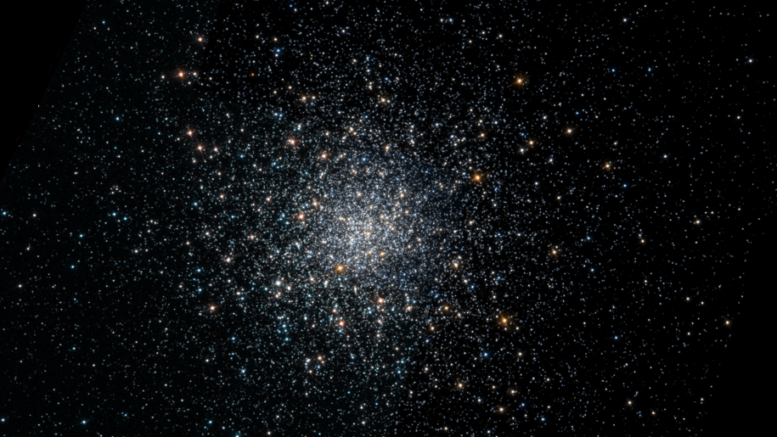Discovered by Charles Messier’s colleague Pierre Méchain in 1780, Messier 79 is a globular cluster in the constellation Lepus the Hare. Messier 79 lies in an unusual location, about 60,000 light years from the Milky Way galactic centre, in the hemisphere opposite the galactic centre. The cluster is suspected to have immigrated from the neighbouring Canis Major Dwarf Galaxy, which is currently experiencing a close encounter with the Milky Way.
| Description | |
| Visible From Pacific Northwest | October to January |
| Best Time To Observe | December and January |
| Minimum Size Of Viewing Device | Small Telescope |
| Object Type | Globular Cluster |
| Designations | Messier 79, M79, NGC 1904, GCl 10, C 0522-245, CD-24 3058, HD 35512, GCRV 3251, 1E 0522.1-2433, MWSC 0528, CPD-24 931 |
| Right Ascension | 05h 24m 10.59s |
| Declination | -24°31’27.3” |
| Constellation | Lepus |
| Number Of Stars | 150,000 |
| Apparent magnitude | +8.56 |
| Apparent dimensions | 8′.7 |
| Object Radius | 52 light years |
| Distance From Earth | 41,000 light years |
History
Messier 79 was discovered by the French astronomer Pierre Méchain on October 26, 1780. Méchain reported his discovery to his friend Charles Messier, who determined the position of the object and added it to his catalogue on December 17, 1780.
William Herschel was the first to resolve the cluster into stars around 1784 with his 20-foot telescope. He described M79 as a “beautiful cluster of stars, nearly 3 minutes in diameter.” He offered a more detailed description after observing the cluster on January 13, 1806 in his large 10-foot telescope.
John Herschel added M79 to the General Catalogue as GC 1112, describing it as a “globular cluster; pretty large; extremely rich; extremely compressed; well resolved.”
Locating M79 In The Sky
The cluster is relatively easy to find because it lies just south of the prominent hourglass shape of Orion and west of Canis Major. M79 is located 20 degrees to the southwest of Sirius, the brightest star in the sky.
An imaginary line drawn from Betelgeuse to Saiph, the bright stars marking Orion‘s left shoulder and left foot, leads to the two brightest stars in Lepus, named Arneb (Alpha Leporis, mag. +2.58) and Nihal (Beta Leporis, mag. +2.81). A line from Arneb to Nihal extended for about 1.5 times the distance between the two stars leads to the fifth magnitude star HR 1771 (HD 35162, HIP 25045), which has a 7th magnitude companion. HR 1771 is located only 0.5 degrees southwest of M79 and appears in the same binocular field of view.

Viewing M79
In small binoculars, it appears as a fuzzy star, while small telescopes reveal a comet-like patch of light with a bright core. 10-inch orn larger telescopes are required to resolve the cluster’s outer regions. The best time of year to observe the cluster is during the winter.
Photographing M79
Messier 79 does not have that many blogs about it to help those astronomers curious about how to proceed with imaging. However, outside of the traditional astrobin and cloudy nights, there is a Canadian website linked below, which does show that one can indeed image M79 with an unmodified quality DSLR.
https://wrobs.ca/astrophotos/2019-01-09-090952?cat=Globular%20Clusters
http://www.astroimages.de/en/gallery/M79.html
Sources And Further Reading
Descriptions of all of Messier Objects can be found here.
https://www.nasa.gov/feature/goddard/2017/messier-79
https://freestarcharts.com/messier-79
http://www.messier.seds.org/Mdes/dm079.html

Be the first to comment on "Messier 79"